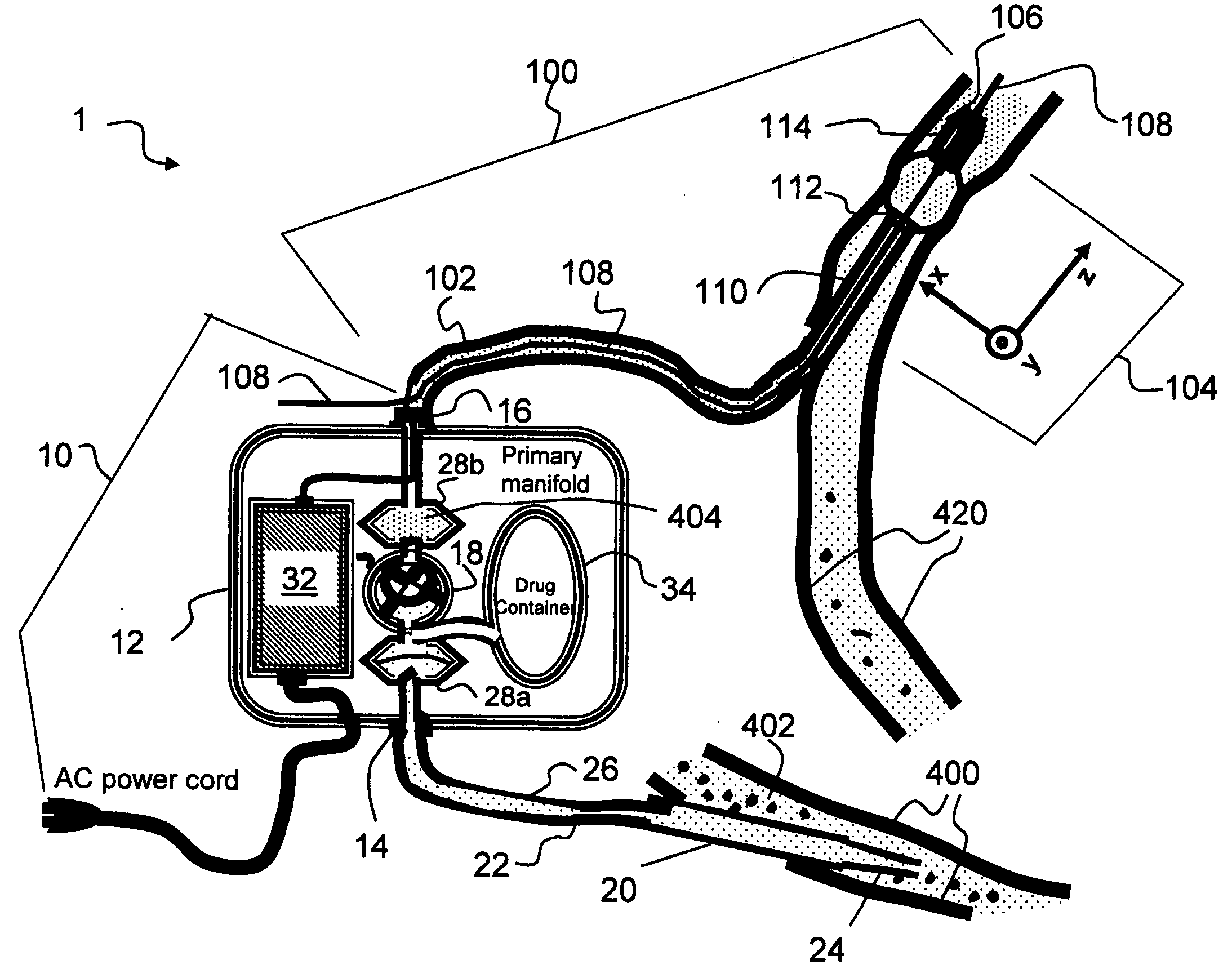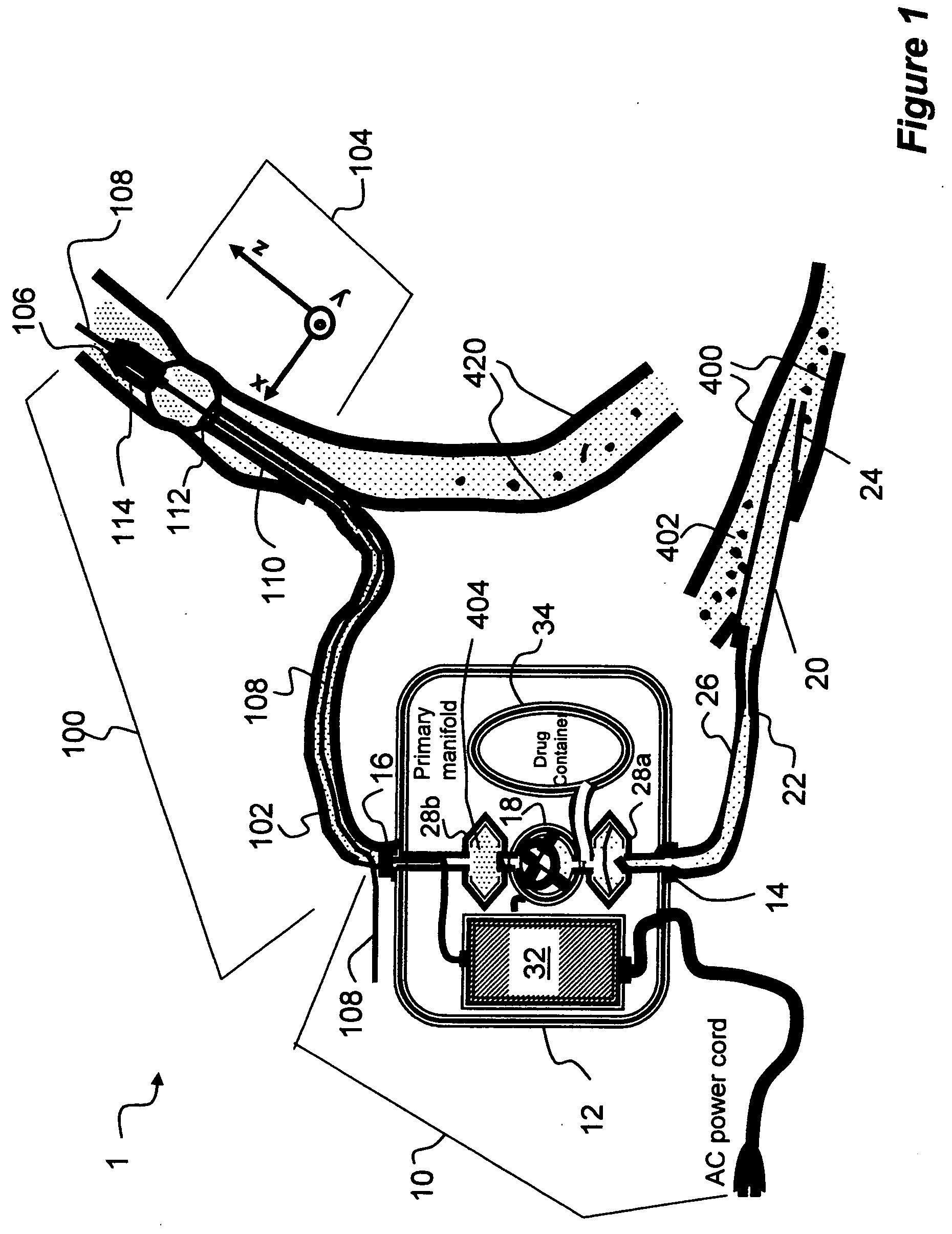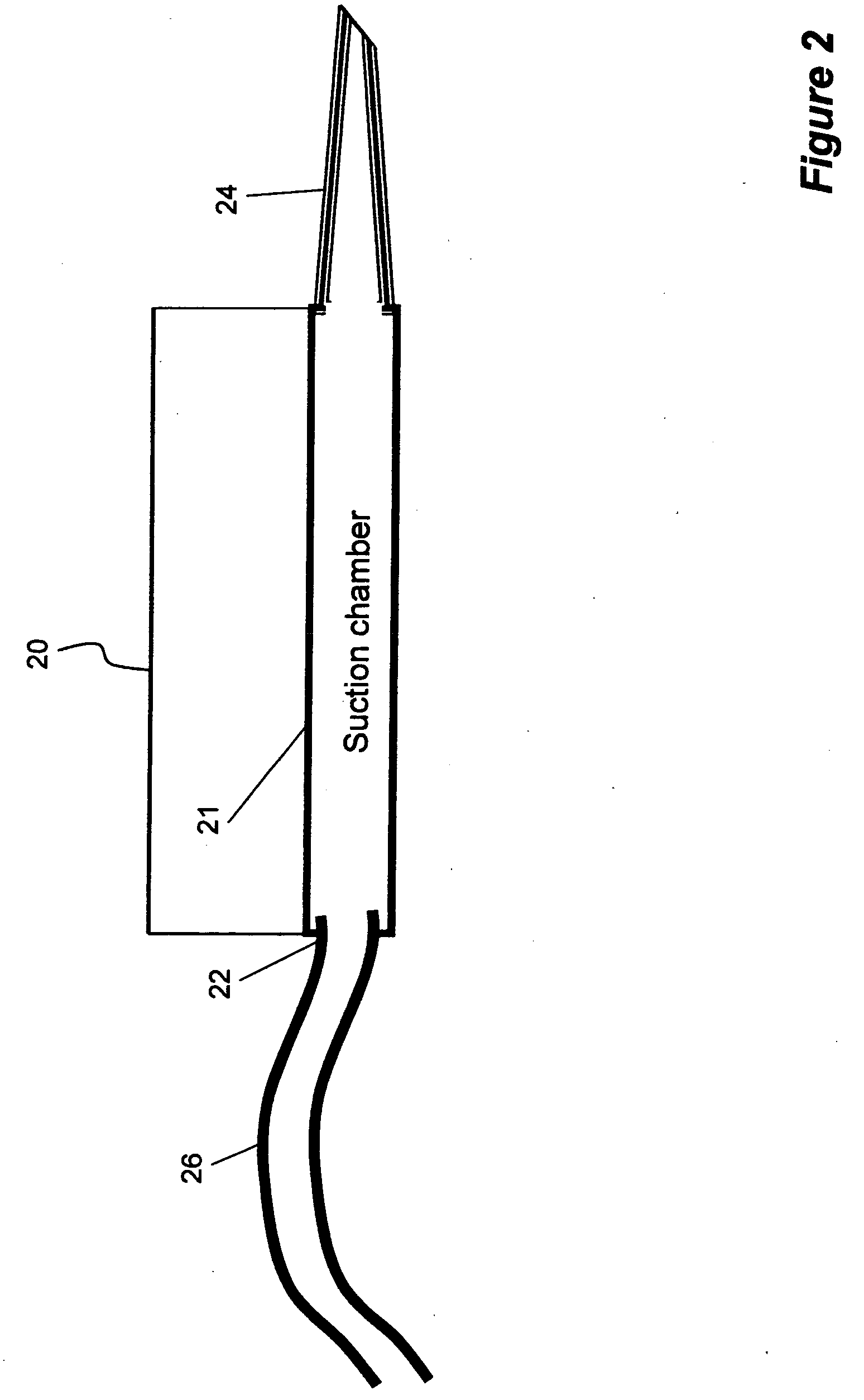But even before this happens, the very existence of the
atheroma can cause the artery wall to stiffen and becomes fragile due to the aforementioned
calcification.
In addition, the fragmented
calcification deposits and tissue debris, if their diameters happen to be greater than 5 micron (1 micron=10−6 meter), can clog the micro veins leading to debility and sometimes
sudden death.
Except for
balloon angioplasty, typically performed only after enough plaque has been removed by other techniques, the other equipments and techniques are highly invasive in nature and are used in situations where major
coronary arteries are blocked hence require speedy reopening.
For the removal of early stage plaques, it is generally too risky to use such highly invasive techniques.
However, the risk of
laser scarring healthy artery wall tissues is still significant.
Due to the high rotational speed and the
hardness of the
diamond bits, the risk of tearing of an artery and bleeding around the heart is significant, despite the claimed theory of “differential
cutting” stating that a
rotational atherectomy equipment driven by
compressed air can preferentially ablate away the atheromatous plaque while leaving the intimate healthy issue intact.
Hence laser
angioplasty is inherently more dangerous, which explains why it has not been used as frequently as other invasive procedures.
Given a proper positioning of the direction of the blade opening, the resulting risk of physical injury is small.
However, directional
atherectomy is not as effective in removing heavily calcified plaques due to its lower
spinning speed and the lower
hardness of steel.
A plaque that leans flat against the
arterial wall is much harder to remove with either laser or mechanical
cutting without risking serious injury to the blood vessel itself owing to the proximity of the diseased area to the healthy vessel wall muscular tissue.
The trouble with this approach is that the procedure does not stop or even slow down the atherosclerosis (hardening of the arteries) as the plaque itself tends to attract more deposition of fatty substances onto it.
This continued calcification tends to make the artery wall inelastic and fragile even if no significant narrowing of the arteries has taken place.
Removal of plaque with laser or mechanical
cutting brings on additional complications.
Hence, the activation can cause the blood to coagulate, or to become thickened, as well as becoming inflamed.
Both blood coagulation and
inflammation of the torn inner lining can lead to additional clogging and narrowing of the blood vessel, further compounding the problem.
Yet another potential complication accompanying the high-speed pulverization process is that some of the generated plaque fragments may not be small enough to travel through the
blood stream, causing clinically significant emboli that could be deadly.
However, their inability to effectively pulverize heavily calcified tissue also increases the danger of letting comparatively large calcified fragments travel through the
blood stream, possibly causing an instant death.
Recent evidence suggests that during the slow, gradual buildup of
atheromatous plaques, small plaque ruptures can sometime occur which in turn cause a sudden increase in plaque burden owing to the accumulation of
blood clotting substance.
Generally a plaque becomes vulnerable to rupture when it starts to grow rapidly and has a thin fibrous cover separating it from the bloodstream inside the lumen.
The debris is frequently too large to pass through capillaries hence obstructs smaller downstream branches of the blood vessel.
Rupture may also allow bleeding from the lumen into the inner tissue of the plaque, making it expand rapidly and protrude into the lumen of the artery resulting in lumen narrowing or even obstruction.
Additionally,
blood clotting activated by the tearing of the fibrous plaque cover can rapidly block the passage of the artery thereby stopping the
blood flow to the tissue the artery supplies.
By now it should become clear that none of the cited prior art medical equipments and techniques can satisfactorily address all of the risks and problems just described.
This is particularly troublesome in view of the fact that mid-stage
vulnerable plaque formation with minimum lumen intrusion is now clinically considered to be even more dangerous owing to its tendency to rupture spontaneously, leading to immediate and severe heart
attack or even instant death.
However, as they do not really remove plaque from the inner lining of the artery wall, they only tend to temporarily reduce the symptom of lumen narrowing.
Extensive human clinical studies have failed to show clinically significant improvement of the
mortality rate of the patients who had undergone the angioplasty and
stent operations.
For those patients who had mechanical
atherectomy performed on them to treat late-stage atherosclerosis, the inability of the high-speed pulverization process used by the atherectomical instruments to
cut the plaque tissue into small enough fragments is a cause for real concern considering its risk of emboli.
Equally importantly, none of the cited prior art medical equipments and techniques can address the problem of early-stage plaque formation.
The inability of
balloon angioplasty and
stent to remove plaque renders them essentially ineffective in treating the early-stage plaque.
The potential of great harm to the artery wall tends to rule out laser and rotational atherectomy.
 Login to View More
Login to View More  Login to View More
Login to View More 


